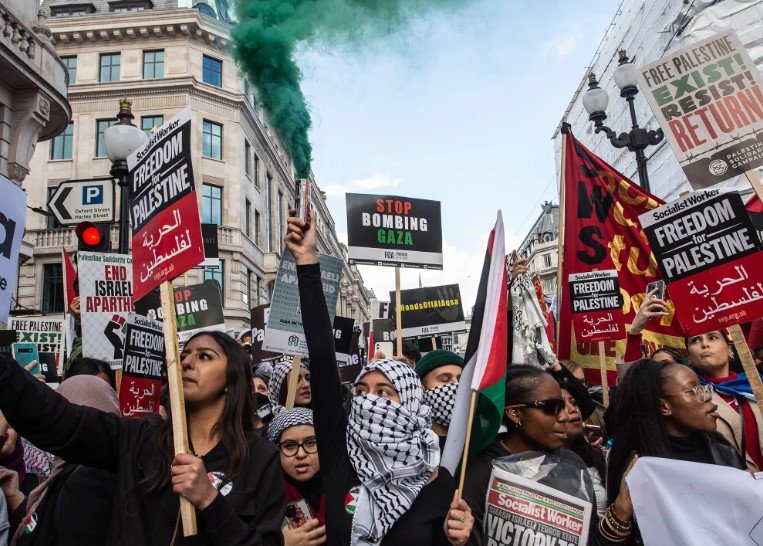Europe is facing growing fatigue over mass Muslim migration and Islamization, sparking protests and policy shifts in countries like France, Germany, and the UK. As of October 2025, recent riots and political debates highlight deep cultural divides, with leaders like Hungary’s Viktor Orban pushing back against EU plans.
Roots of the Crisis
Mass migration from Muslim-majority countries has surged since 2015, driven by conflicts in Syria, Afghanistan, and North Africa. This influx has led to what many call “migrant fatigue,” where locals feel overwhelmed by integration challenges.
In recent years, data shows over 1 million migrants entered Europe in 2024 alone, according to migration tracking groups. Public sentiment has shifted, with polls indicating 60 percent of Europeans now favor stricter borders.
This fatigue stems from security concerns, economic strains, and cultural clashes. Attacks linked to radical elements have fueled fears, while job competition in low-wage sectors adds tension.

Experts point to failed integration policies as a key issue. Many migrants live in isolated communities, leading to parallel societies that resist mainstream values.
Key Impacts on Society
The crisis has triggered social unrest and political backlash. Riots in France last year over police actions exposed ethnic divides, and similar events continue into 2025.
Economic costs are high. Governments spend billions on housing and welfare, straining budgets amid inflation.
Cultural changes are evident too. Some cities report rising demands for Sharia-compliant services, sparking debates on national identity.
- Increased crime rates in migrant-heavy areas, with a 15 percent rise in urban violence reported in 2024.
- Political shifts, as far-right parties gain votes in elections across Europe.
- Social divisions, where native populations feel their traditions are under threat.
A table below outlines migration trends in select countries:
| Country | Migrants in 2024 | Public Support for Limits (%) |
|---|---|---|
| Germany | 250,000 | 65 |
| France | 180,000 | 70 |
| UK | 150,000 | 62 |
| Sweden | 90,000 | 68 |
These figures show a clear pattern of growing restrictions.
Communities report exhaustion from constant adaptation, leading to “fatigue” that affects daily life and mental health.
Country-Specific Challenges
France stands out with warnings of potential civil war by 2030. Experts like former police officials describe a “Mexicanization” where drug gangs and ethnic groups control neighborhoods.
In Germany, integration struggles have led to backlash against Chancellor Olaf Scholz’s policies. Recent protests in Berlin demand deportation of failed asylum seekers.
The UK faces similar issues, with anti-migration riots in 2024. Leaders debate balancing diversity with social cohesion.
Hungary contrasts this by maintaining strict borders, avoiding much of the unrest. Prime Minister Viktor Orban recently criticized EU plans to fund Arab student programs, calling them misguided.
Sweden, once open to migrants, now tightens rules after crime spikes. A 2025 report notes assimilation could take generations.
Security and Terrorism Links
Security remains a top concern. Radical Islamist acts, though not representative of all migrants, heighten fears.
Data from 2025 shows a 10 percent increase in terror-related arrests in Europe. This ties into broader fatigue, as publics question vetting processes.
Governments respond with enhanced surveillance, but critics say this erodes civil liberties.
Islamization debates focus on cultural shifts, like mosque constructions and halal food demands, seen by some as eroding secular norms.
Economic and Demographic Factors
Demographically, Europe’s aging population needs workers, but mismatched skills cause friction.
Fertility rates among Muslim migrants are higher, projecting Muslims to reach 10 percent of Europe’s population by 2050, up from 5 percent now.
Economically, migrants contribute through labor, but short-term costs fuel resentment.
Policies like the EU’s Mediterranean Pact aim to manage flows, yet face criticism for encouraging more arrivals.
Path Forward and Global Views
Looking ahead, experts predict more restrictions. The US watches closely, with its own debates on diversity and “black fatigue” echoing Europe’s migrant issues.
Solutions include better integration programs, border controls, and addressing root causes like climate-driven displacement.
International bodies urge humane approaches, but national leaders prioritize voter concerns.
As this unfolds, share your thoughts in the comments. What solutions do you see for Europe’s migration challenges? Engage with others to discuss.
